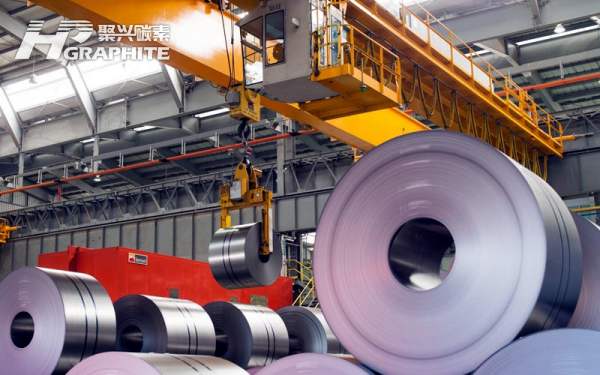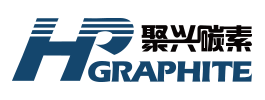【Steel】market remains volatile, US-China tariff negotiations bringing some positive signals?

Graphite electrodes are key materials for EAF steelmaking, mainly used for arc heating. With excellent conductivity and high-temperature resistance, they are crucial for improving EAF production efficiency and quality.
【Steel】market remains volatile, with ongoing fluctuations, and US-China tariff negotiations bringing some positive signals?
The domestic steel market continues its weak and oscillating trend, with the core contradictions focusing on the dual pressures of weak supply-demand balance and diminishing cost support. Although the Central Political Bureau emphasized a "steady growth" tone during its meeting, policy measures are limited. Coupled with the persistently low real estate funding (housing project funding rate only 49.32%), demand release is significantly constrained. Meanwhile, new environmental policies like the Technical Regulations for Ultra-Low Emission Control of Sintering Flue Gas in Steel Industry implemented since April have not yet significantly impacted supply in the short term but will long-term elevate industry costs and fast-track the clearance of outdated capacity.
Ⅰ. Demand Side: Divergent Performance and Uneven Recovery
Construction Industry: Spring traditionally is the peak construction season, yet the real estate market remains sluggish. In March, new commercial housing starts fell by 32.2% YoY, and some large real estate firms reduced new projects nationwide by 30%.
However, infrastructure investment provides critical support: fixed asset investment in Jingning County rose 14%; nationwide railway fixed asset investment from January to April increased 5.3% YoY, leading to a temporary rebound in rebar demand.
There are significant regional differences: East China, with strong demand, has lower inventories than the national average, while Northeast regions, affected by winter construction halt and slow demand release, face larger inventory pressures. Overall, construction steel demand has limited growth, and some less developed areas remain weak.
Manufacturing Demand: The manufacturing sector shows marked divergence:
· Construction machinery: Driven by domestic and foreign infrastructure investment, orders for loaders and excavators are increasing, supporting high-strength steel procurement; demand for hot-rolled coil remains stable.
· Automotive and home appliances: Vehicle production grows 10-40% YoY, but weak consumption momentum causes manufacturers to cut plans, leading to sluggish steel demand for cars. Home appliance demand, while approaching peak season, faces high inventory pressure, making procurement cautious.
· Export impacts: US tariffs on Chinese steel increased to 104%, but the direct impact is limited (China exported only 890,000 tons to the US in 2024). However, the indirect drag on electromechanical exports (which account for 59.4% of China's exports) caused a 24.87% MoM decline in hot-rolled coil exports in April. Additionally, Vietnam imposed a 37.13% temporary anti-dumping tariff on Chinese alloy steel coated sheet coils, further squeezing export space.
Ⅱ. Supply Side: Production Adjustments and Structural Changes
Crude Steel Production Dynamics: In the week of April 23, blast furnace capacity utilization was 50.22%, with actual production reaching 2.2911 million tons, remaining at high levels YoY. Small mills, under cost pressure and market share squeeze, sharply cut output, while large mills maintained production stability thanks to scale advantages; some regions even increased output to meet key project needs.
Product structure shows divergence: growth in construction steel output is slowing, while industrial steels like hot-rolled coil have mixed trends driven by manufacturing demand shifts.
Steel Plant Inventories: Major steel companies saw inventories up 4.2% WoW to 16.71 million tons, indicating a trend of accumulation, but social inventories are 23.2% lower YoY, reflecting proactive destocking by mills and cautious replenishment by traders.
By product:
· Construction steel: inventories in East China are clearing quickly, while those in Northeast remain high.
· Industrial steels: cold-rolled sheet stocks are high due to downstream demand weakness; high-end specialty steel inventories are reasonable.

Ⅲ. Cost Factors: Price Fluctuations and Their Impact
Iron Ore Prices: International iron ore markets saw an 8.5% WoW decline in the Platts 62% Fe index in April, influenced by disruptions in supply from Brazil and Australia. However, outages at Brazilian mines caused temporary rises.
Domestically, increased scrap supply and global capacity recovery weakened upward momentum. At the end of April, Qingdao port's 62% Australian lump ore was priced at 760 RMB/wet ton, reducing support for steel prices.
Coke and Fuel Prices: First-round coke price hike of 50 RMB/ton was implemented, but the second round was postponed due to tariff policy disturbances and bearish sentiment in the steel market.
Coal capacity releases and environmental restrictions caused coke prices to fluctuate; as of April, port spot prices for first-grade coke stood at 1320 RMB/ton, easing some cost pressures for mills but not fully passing through to end-users.
Ⅳ. Steel Price Outlook
Short-term Trend: Amid weak supply-demand balance and cost competition, steel prices are expected to remain volatile. If construction demand recovers post-Labor Day with weather improvement or manufacturing shows unexpected strength, prices may stabilize; else, persistent demand weakness could induce further decline. Market sentiment remains cautious, with frequent fluctuations in futures main contracts, reflecting uncertainty.
· Construction Steel: Price gains in concentrated infrastructure areas; in weak demand regions, limited downside due to cost support.
· Hot-Rolled Coil: Continuing oscillation amid manufacturing demand divergence.
· Cold-Rolled Coil: Demand remains stable with small price swings.
· Medium-thick Plates: Depends on major project procurement pace.
Ⅴ. Summary
The current steel market is at a critical stage of slow demand recovery and structural adjustments in supply. Although cost factors support steel prices, demand uncertainties remain the key element influencing prices. In the short term, the price trend is likely to remain in oscillation.
Feel free to contact us anytime for more information about the EAF Steel market. Our team is dedicated to providing you with in-depth insights and customized assistance based on your needs. Whether you have questions about product specifications, market trends, or pricing, we are here to help.
No related results found








0 Replies